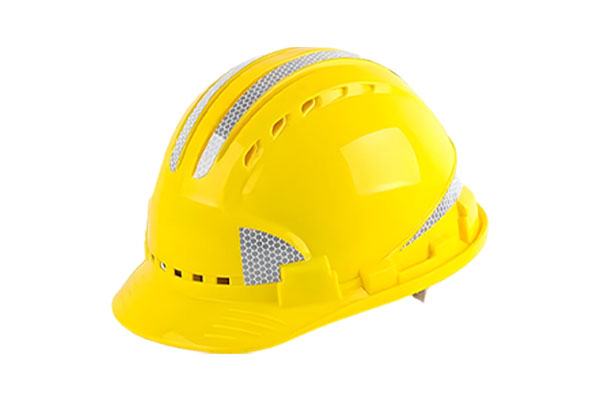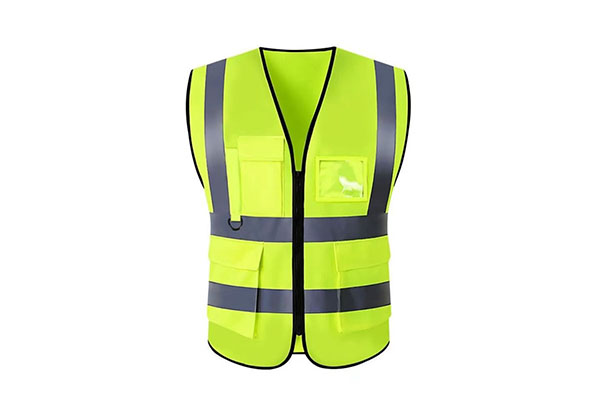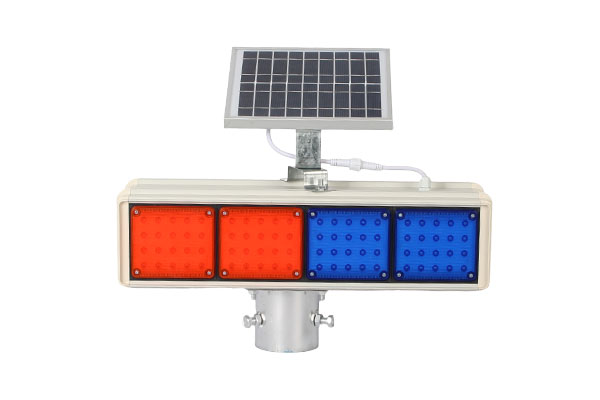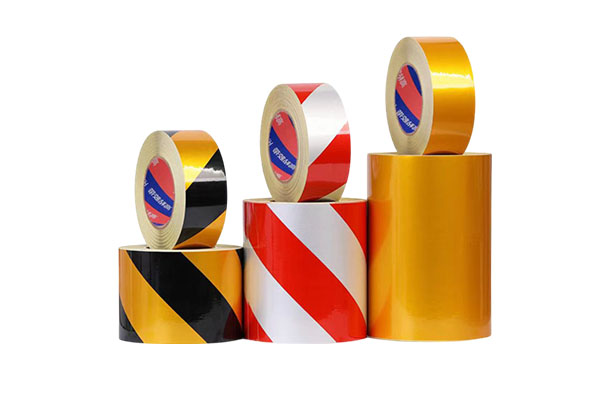How have reflective vests become the new go-to for urban life?
Release Time : 2025-10-10
When people think of reflective vests, images often come to mind of construction workers, traffic police, or sanitation workers toiling away in the night. These eye-catching fluorescent yellow or orange-red vests were long considered a safety symbol reserved for "professionals." However, in recent years, reflective vests have quietly moved beyond construction sites and roads and into the daily lives of ordinary citizens, becoming standard equipment for cyclists, night runners, dog walkers, and even couriers and movers. No longer simply protective clothing for professionals, they are evolving into a new piece of urban life gear for the masses, embodying profound changes in safety, practicality, and urban lifestyles.
1. Surge in Demand for Nighttime Travel in Cities: Safety Becomes a Must
With the accelerating pace of urban life and the booming nighttime economy, the frequency of people traveling at night has increased significantly. Whether it's an after-get off work workout run, a late-night bike ride home, an early morning dog walk, or picking up late-night takeout, more and more people are navigating low-light environments. However, urban roads are densely populated, especially in low-visibility conditions like rain, fog, dusk, or tunnels. Pedestrians and non-motorized vehicles are easily overlooked by drivers, leading to traffic accidents. Data shows that a high proportion of pedestrian accidents at night are caused by "failure to be detected in time." The core function of reflective vests—producing strong reflections under headlights, significantly enhancing the visibility of the human silhouette—precisely addresses this safety pain point. A lightweight reflective vest can be identified by vehicles from a distance of 100 meters, buying drivers valuable reaction time. It is precisely this intuitive value of "visibility = greater safety" that has elevated reflective vests from "occupational protection" to "universal protection," making them a proactive safety device of choice for urban residents.
2. The Rise of Sports and Commuting Culture: Awakening of Gear Awareness
In recent years, outdoor sports such as running, cycling, and skateboarding have flourished in China, generating a large community of enthusiasts. At the same time, shared bicycles and electric bicycles have become important modes of urban commuting. These activities often involve road use, and the need for safety equipment is gradually becoming a common practice. Helmets, headlights, and reflective stickers are no longer just "cool accessories" for niche users; they've become "essential equipment" for mainstream users. Reflective vests and work clothes, lightweight, easy to put on and take off, and non-interfering with exercise, are ideal for night runners and cyclists. Many sports brands have also taken advantage of this trend by launching professional sports vests that combine stylish designs with high reflectivity, incorporating safety elements into trendy outfits. This "safety is fashion" mentality has further boosted the popularity of reflective vests and work clothes among young people.
3. The Sharing Economy and Safety Awareness among Temporary Workers
In cities, a large number of non-traditional workers operate at night, such as food delivery drivers, couriers, ride-hailing drivers, and movers. They spend long hours traversing city streets, working irregular hours, and pose a high safety risk. Although platform companies are gradually strengthening safety training and equipment provision, many workers have already recognized the importance of reflective gear and are actively purchasing and using reflective vests and work clothes. Especially in situations like moving and temporary hauling, ordinary citizens often face the risks of loading and unloading goods on the roadside at night while assisting with the transport of furniture and appliances. A reflective vest, worn temporarily, can effectively alert passing vehicles and prevent accidents. This temporary safety need has led to the daily use of reflective vests and work clothes as "emergency gear."
4. Design Upgrades and Changing Consumer Perceptions
In the past, reflective vests and work clothes were often dismissed due to their monotonous styles and stuffy materials. However, product design has evolved significantly. More and more brands are launching lightweight, breathable mesh, foldable styles, and even incorporating fashionable elements like fluorescent color blocks, trendy prints, and adjustable cuts. Some reflective vests also feature integrated LED flashing lights and waterproof coatings, further enhancing their practicality and appeal. At the same time, public safety awareness and risk prevention are continuously increasing. People no longer view reflective vests and work clothes as symbols of "bad luck" or "only worn when unlucky," but now rationally view them as preventative protective tools. Safety advocates and sports bloggers on social media have been promoting reflective gear, further boosting its social acceptance.
The transformation of reflective vests and work clothes from "workwear" to "new urban lifestyle essentials" reflects the increasing safety demands and public awareness associated with urbanization. They are not only practical tools for addressing the risks of nighttime travel, but also a manifestation of a proactive, life-saving approach. As more and more people are willing to wear a reflective vest while running at night or a reflective tape while walking their dogs, the safety threshold in cities is quietly being raised through these subtle, conscious actions.
1. Surge in Demand for Nighttime Travel in Cities: Safety Becomes a Must
With the accelerating pace of urban life and the booming nighttime economy, the frequency of people traveling at night has increased significantly. Whether it's an after-get off work workout run, a late-night bike ride home, an early morning dog walk, or picking up late-night takeout, more and more people are navigating low-light environments. However, urban roads are densely populated, especially in low-visibility conditions like rain, fog, dusk, or tunnels. Pedestrians and non-motorized vehicles are easily overlooked by drivers, leading to traffic accidents. Data shows that a high proportion of pedestrian accidents at night are caused by "failure to be detected in time." The core function of reflective vests—producing strong reflections under headlights, significantly enhancing the visibility of the human silhouette—precisely addresses this safety pain point. A lightweight reflective vest can be identified by vehicles from a distance of 100 meters, buying drivers valuable reaction time. It is precisely this intuitive value of "visibility = greater safety" that has elevated reflective vests from "occupational protection" to "universal protection," making them a proactive safety device of choice for urban residents.
2. The Rise of Sports and Commuting Culture: Awakening of Gear Awareness
In recent years, outdoor sports such as running, cycling, and skateboarding have flourished in China, generating a large community of enthusiasts. At the same time, shared bicycles and electric bicycles have become important modes of urban commuting. These activities often involve road use, and the need for safety equipment is gradually becoming a common practice. Helmets, headlights, and reflective stickers are no longer just "cool accessories" for niche users; they've become "essential equipment" for mainstream users. Reflective vests and work clothes, lightweight, easy to put on and take off, and non-interfering with exercise, are ideal for night runners and cyclists. Many sports brands have also taken advantage of this trend by launching professional sports vests that combine stylish designs with high reflectivity, incorporating safety elements into trendy outfits. This "safety is fashion" mentality has further boosted the popularity of reflective vests and work clothes among young people.
3. The Sharing Economy and Safety Awareness among Temporary Workers
In cities, a large number of non-traditional workers operate at night, such as food delivery drivers, couriers, ride-hailing drivers, and movers. They spend long hours traversing city streets, working irregular hours, and pose a high safety risk. Although platform companies are gradually strengthening safety training and equipment provision, many workers have already recognized the importance of reflective gear and are actively purchasing and using reflective vests and work clothes. Especially in situations like moving and temporary hauling, ordinary citizens often face the risks of loading and unloading goods on the roadside at night while assisting with the transport of furniture and appliances. A reflective vest, worn temporarily, can effectively alert passing vehicles and prevent accidents. This temporary safety need has led to the daily use of reflective vests and work clothes as "emergency gear."
4. Design Upgrades and Changing Consumer Perceptions
In the past, reflective vests and work clothes were often dismissed due to their monotonous styles and stuffy materials. However, product design has evolved significantly. More and more brands are launching lightweight, breathable mesh, foldable styles, and even incorporating fashionable elements like fluorescent color blocks, trendy prints, and adjustable cuts. Some reflective vests also feature integrated LED flashing lights and waterproof coatings, further enhancing their practicality and appeal. At the same time, public safety awareness and risk prevention are continuously increasing. People no longer view reflective vests and work clothes as symbols of "bad luck" or "only worn when unlucky," but now rationally view them as preventative protective tools. Safety advocates and sports bloggers on social media have been promoting reflective gear, further boosting its social acceptance.
The transformation of reflective vests and work clothes from "workwear" to "new urban lifestyle essentials" reflects the increasing safety demands and public awareness associated with urbanization. They are not only practical tools for addressing the risks of nighttime travel, but also a manifestation of a proactive, life-saving approach. As more and more people are willing to wear a reflective vest while running at night or a reflective tape while walking their dogs, the safety threshold in cities is quietly being raised through these subtle, conscious actions.







